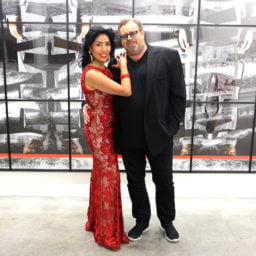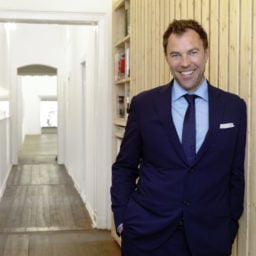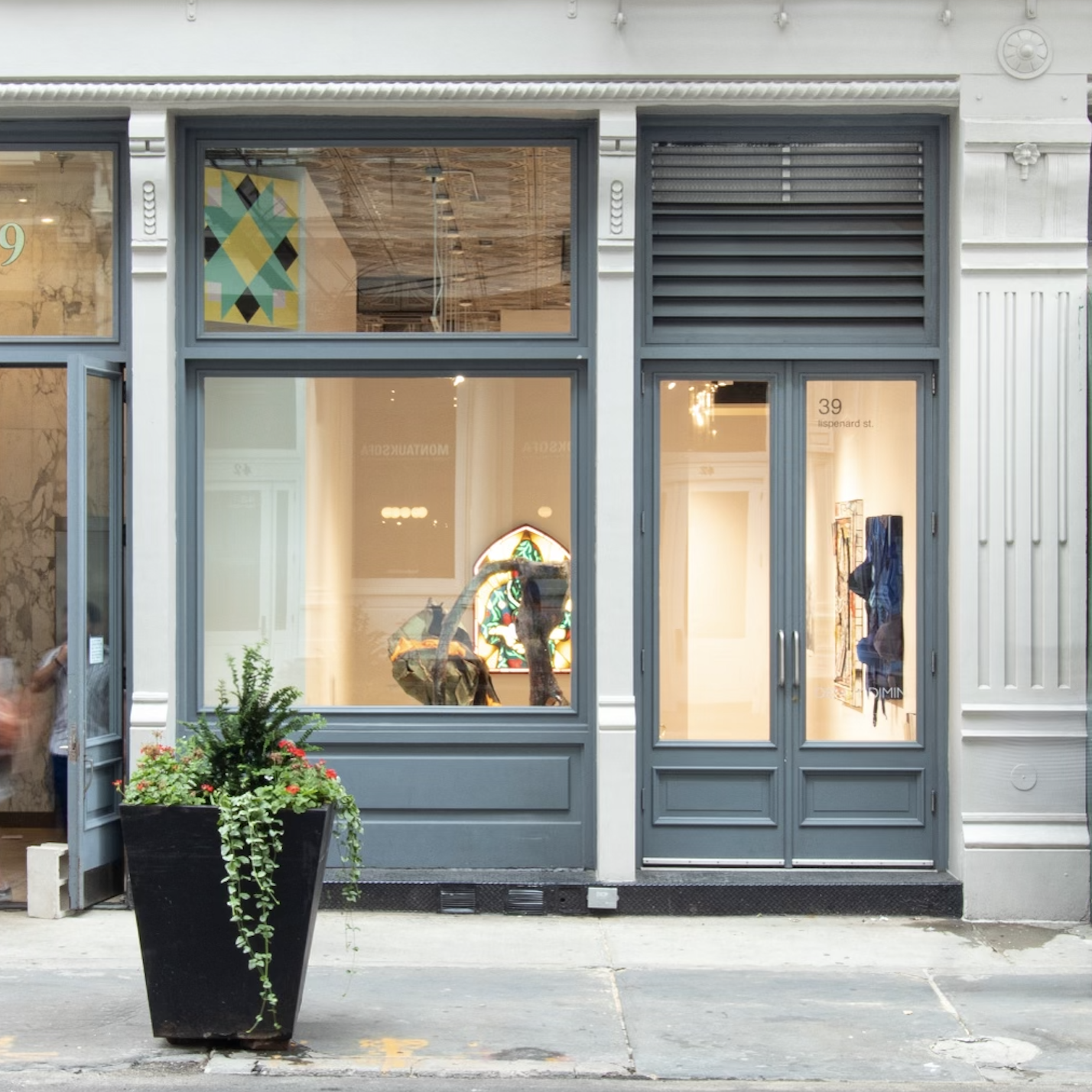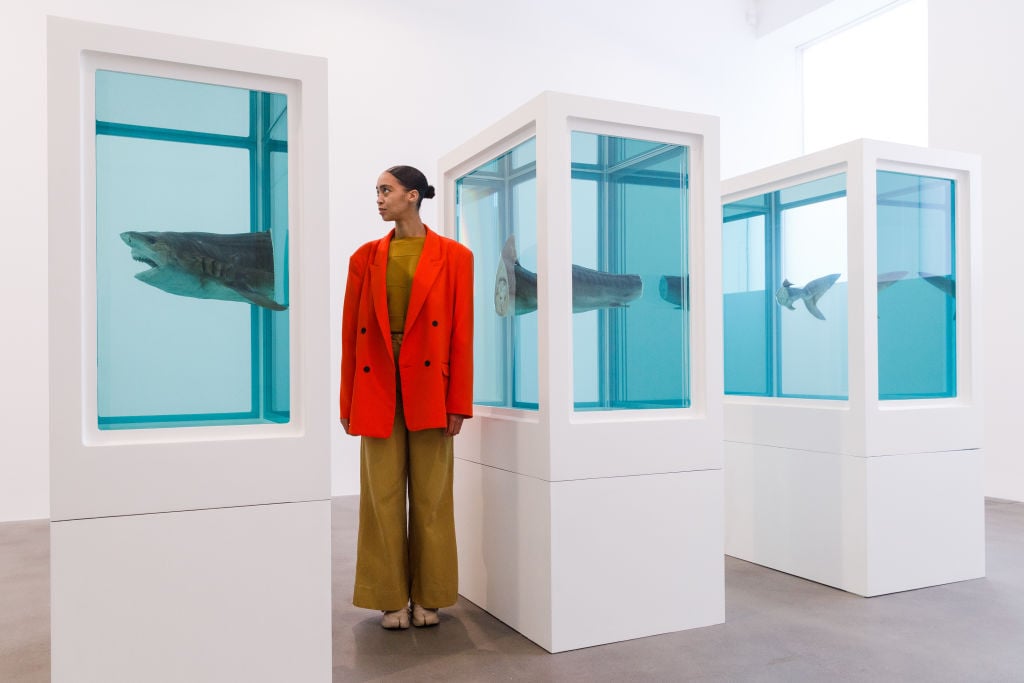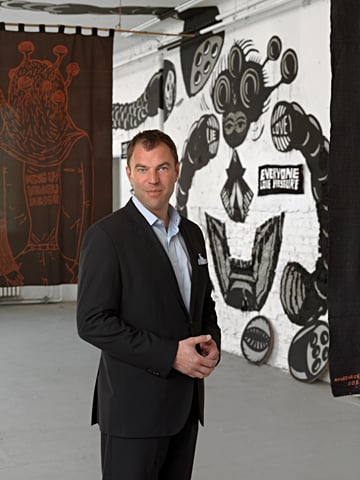


Matthias Arndt, Gallery Founder and Owner
Name: Matthias Arndt
Title: Founder and Owner
Gallery Name: ARNDT
Gallery Info: Potsdamer Straße 96, 10785 Berlin, Germany
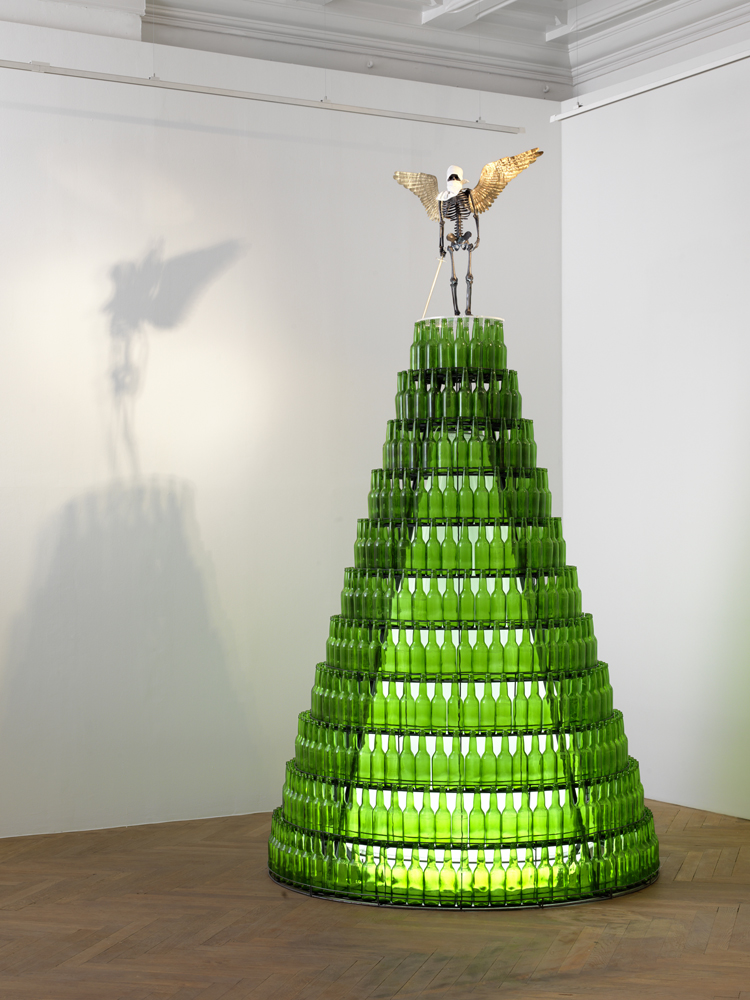
Agus Suwage, Monumen Yang Menjaga Hankamnas #2, 2013, graphite on resin, gold-plated brass, cloth, steel, beer bottle, vinyl, led lights, acrylic box, fluorescence lights, ARNDT, Berlin, Germany
Silvia Koch: What is the focus of your art gallery?
Matthias Arndt: Founded 20 years ago in Berlin as one of the first program galleries with an international direction, ARNDT continues to focus on established Contemporary Art. With the opening of our gallery in Singapore in January of this year, ARNDT is extending its exhibition space toward Asia and is showcasing Chinese, Indonesian, and Southeast Asian Contemporary Art in Berlin, Singapore, and in international “Pop-Up-Shows.”
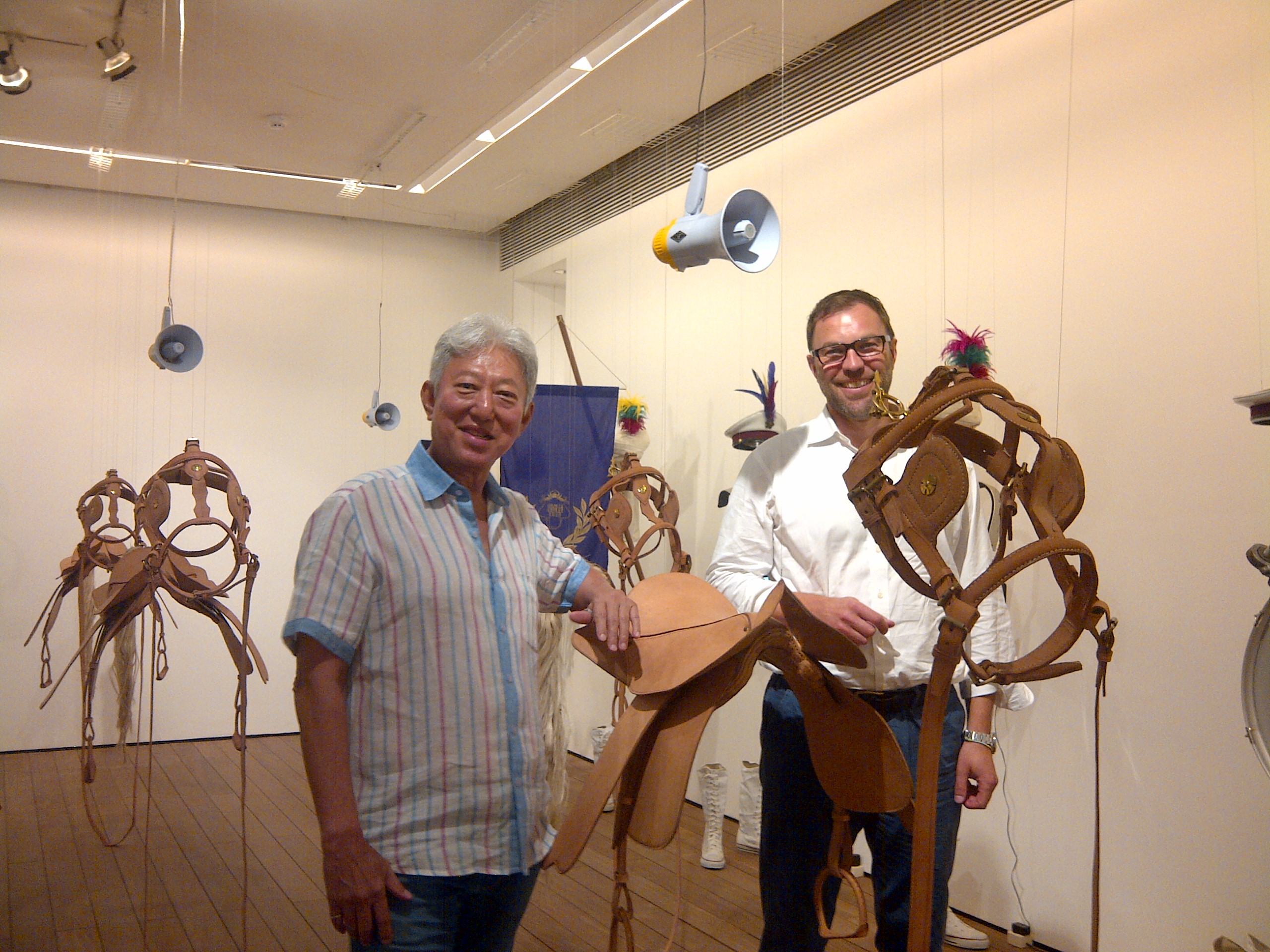
Matthias Arndt visiting Rudi Akili at his Museum in Jakarta, Indonesia, July 2013
SK: How many artists do you represent? Could you tell us a little about them?
MA: After being a traditional gallery for 17 years, I altered the dimension of the work: I changed the gallery’s name from “Arndt & Partner” to “ARNDT,” and moved the original location from Checkpoint Charlie to the new art center, Potsdamer Strasse. In 2010, I extended the capacity of the gallery activities, and I am now active as an art agent, art dealer, and expert of Asian and international Contemporary Art.
In the Berlin space, ARNDT is continuing its representation of artists such as Sophie Calle (French, b.1953), Gilbert and George (British), Vik Muniz (Brazilian, b.1961), Jitish Kallat (Indian, b.1974), and the ZERO artist, Heinz Mack (German, b.1931).
Simultaneously, I am expanding the gallery’s program of international Contemporary Art at Gillman Barracks, our new location in Singapore, as well as curating Pop Art shows in London, Sydney, Singapore, Melbourne, Seoul, and Manila. I set clear priorities on the exhibitions and projects, on which I work with artists or partner galleries.
My goal is to develop new markets and art environments, as I did with the opening of my art gallery in 1994 at the then-not-very-art-established location in Berlin.
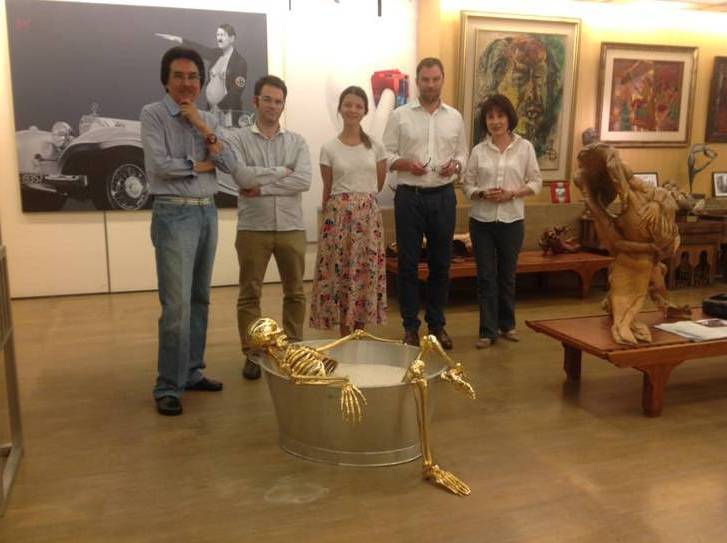
Matthias Arndt at the Deddy Kusuma Collection, Jakarta, Indonesia, July 2013
SK: How do you select your artists?
MA: I select my artists intuitively as well as deliberately. The representation of artists happens through current collaborations as well as through my efforts to visit new artist studios, collections, and art fairs worldwide. In 2012, those efforts amounted to 800,000 km [497,097 mi] in travel. I’m also interested in regional artists. At the moment, we are looking for young, talented artists in Berlin for the exhibition series, Berlin Masters. We are also looking in Asia, where the focus lies on Southeast Asia, as well as in the United States, for a project happening next year.
SK: Do you have any development plans for your art gallery (new location, new employees, expansion, etc.)?
MA: In January, we opened an exhibition and project space in Singapore. After staging various exhibitions in Asia and Australia, we will now increase our Asia-related activities in Singapore. In addition to the gallery’s exhibition program in the new art center, Gillman Barracks, we are active art consultants throughout Southeast Asia and the Pacific Region.
SK: What was your most important sale last year?
MA: A private sale of a complete collection of Indian and Indonesian Contemporary Art.
SK: Do you notice any geographic trend in the origin of your clients?
MA: Many important collections of Asian Art and international art are developing in Asia, especially in Indonesia, the Philippines, and of course, in China. At the same time, new museums are being developed in Singapore and Hong Kong, and we are working closely with private and institutional collections in Australia and the Pacific that are focusing on international art. We’re continuing to nurture a collection of art amassed over the past 20 years in Europe and the United States, as well as simultaneously adding new works from different places.
SK: When is your next exhibition? Why is it a must-see show?
MA: This summer in Berlin, we exhibited 16 of the most important Indonesian artists, accompanied by the book SIP! Indonesian Art Today, which was published by DISTANZ Verlag. This exhibition will also be showcased on September 13, 2013 in Singapore. Profiling two decades of Indonesian Contemporary Art, this exhibition shows the new, dynamic art center of Asia. During Berlin Art Week, we are showing works by the most important living Australian artist, Mike Parr (Australian, b.1945). Parr was honored with a solo show at the Kunsthalle Wien in Vienna this spring. He is not a familiar face in the West, however, internationally, he is an extremely important performance artist, inspired by Viennese Actionists, as well as the work of Rebecca Horn (German, b.1944) and Marina Abramovic (Serbian, b.1946).
SK: Do you think participating in art fairs is necessary to succeed as an art gallery? If so, which art fairs?
MA: Today, art fairs are an indispensable element of the gallery business. Concerning effort and content, we treat our participation in Art Basel Hong Kong, Art Dubai, Art Stage Singapore, and abc (art berlin contemporary) like separate, external gallery exhibitions.
SK: Have you noticed any changes in the gallery market?
MA: The market has become increasingly vertically integrated. The median-price and mid-career artists are struggling. The younger artists are asserting themselves well, and the so-called blue-chip-range artists are exploding pricewise, and everything is possible. Thankfully, we cover a broad spectrum geographically with regard to our inventory and with regard to our market segment. However, normal, medium-sized galleries are experiencing difficulties.
SK: Has the Internet changed how you do business?
MA: Certainly. Around 70% of our business transactions run through the Internet in one way or another. In a global market, most of our clients and the public see work or exhibitions for the first time through a reproduction. Though I examine most of the original work before delivering or releasing them for sale, and we have had a long working relationship with most of our clients. But 70–80% of our clients see a work first through a JPEG or a PDF. Depending on the artwork and price range, we then organize a trip or a shipment to facilitate an original viewing.
SK: How often do you use artnet? What do you use it for?
MA: For researching prices, artnet is indispensable for the secondary market, but also, the Market Alert function makes it easier for us to get the best overview of the auction market without having to move and work through tons of catalogues. Also, more and more initial contacts and requests are reaching us via the artnet Galleries function. What Marc Zuckerberg achieved with Facebook for social media, Hans Neuendorf has accomplished with artnet for the art market.
SK: What advice would you give to a young collector?
MA: Only buy art that touches you emotionally, but also consider pieces against which you react badly at first. Afterward, those are the pieces that will become relevant and have the highest value in the end.
Look with your eyes, not with your ears.
Have the courage to think, to look, and to buy against the trend: there is always high-profile and important art that, for various reasons, is undervalued in the current market.
Always get a main work of an artist and, in case of doubt, invest more in one single work then in many smaller and/or cheaper pieces.
SK: Are there any exhibitions at the moment that you would recommend?
MA: Art Jog, the artist fair in Yogyakarta, the center of art in Indonesia. Next to Berlin, Yogyakarta is one of the most exciting places for Contemporary Art.
SK: How often do you participate in art events?
MA: Almost on a daily basis.
SK: If you could have dinner with any three artists, living or dead, who would you choose?
MA: Fra Angelico (Italian, ca.1400–1455), Joseph Beuys (German, 1921–1986), and Philip Guston (American, 1913–1980).
Follow Artnet News on Facebook:
Want to stay ahead of the art world? Subscribe to our newsletter to get the breaking news, eye-opening interviews, and incisive critical takes that drive the conversation forward.

